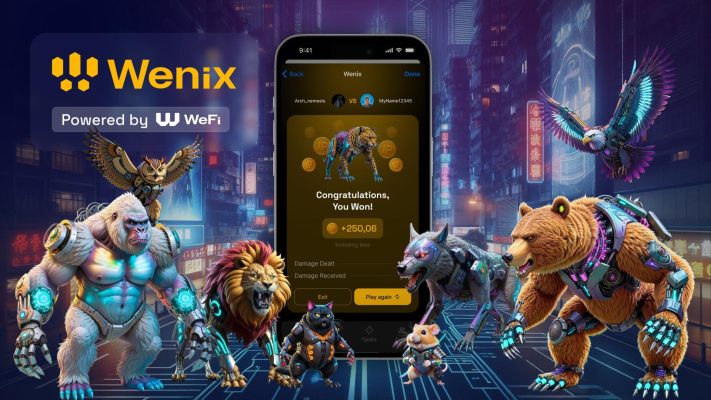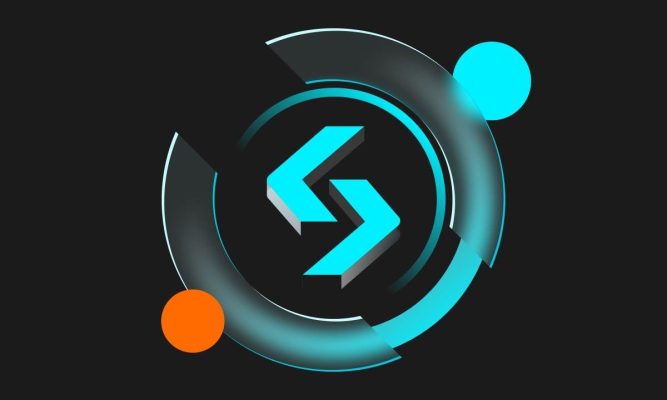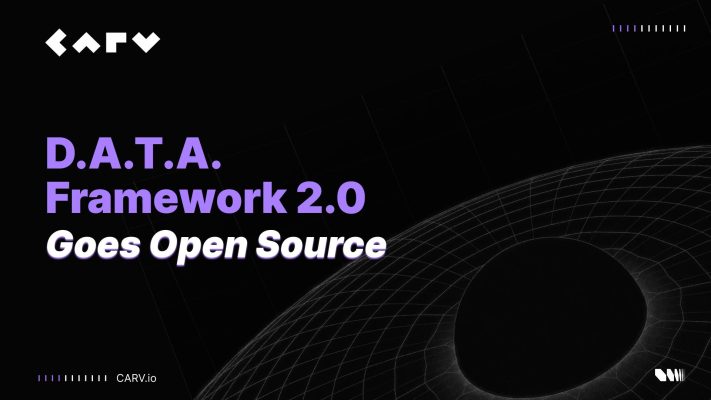Looking for Goerli ETH? If you’ve searched the internet, you may have seen outdated articles suggesting that Goerli ETH tokens are still available. In reality, this information is no longer accurate.
In this article, we’ll set the record straight. We’ll explain what Goerli ETH was, how it was used, why it’s no longer a viable option, and what alternative solutions you can explore now.
Stay tuned for the facts and up-to-date guidance!
Table of contents
- Where Can You Obtain Goerli Testnet ETH for Free?
- What Was the Goerli Testnet, and What Did Its Tokens Represent?
- Why Goerli Testnet Isn’t Available Anymore? The ENTIRE Story
- So, How to Get Goerli ETH from Goerli Faucets?
- How to Use the Alternative – How to Get Sepolia ETH on Faucets: Step-by-Step Guide
- How to Add Sepolia ETH to MetaMask: Step-by-Step Guide
- FAQs
- Conclusion
Where Can You Obtain Goerli Testnet ETH for Free?
In the past, platforms like Alchemy, QuickNode, Infura, and Moralis offered faucets that allowed users to get Goerli Testnet ETH for free. These were among the most popular options for developers to easily access Goerli ETH.
However, this is no longer the case. These major platforms no longer provide free Goerli ETH through their faucets, and alternatives are also scarce (towards non-existent).
Below, we’ll explain why this change has occurred and what it means for those seeking Goerli ETH.
What Was the Goerli Testnet, and What Did Its Tokens Represent?
The Goerli Testnet was a public blockchain network designed to test and develop applications on the Ethereum blockchain. It functioned as a replica of the main Ethereum network but utilized test Ethereum (ETH) tokens that held no real-world value.
Primarily, the Goerli Testnet served as an important environment for developers to test decentralized applications (dApps) before deploying them to the main Ethereum network (a cross-client testnet). This allowed developers to identify and address bugs early on, ultimately saving time and resources.
Although widely used, the Goerli Testnet was officially phased out after its sunset date on April 13, 2024.
Why Goerli Testnet Isn’t Available Anymore? The ENTIRE Story
Over time, the Ethereum Foundation recognized the need for a more modern and efficient testnet as it became clear that Goerli was struggling to keep pace with Ethereum’s evolution.
The Merge event (The Ethereum Merge was a noteworthy upgrade that transitioned the Ethereum blockchain from a proof-of-work consensus mechanism to a proof-of-stake system. This transition combined the Ethereum Mainnet with the Beacon Chain, resulting in a more energy-efficient and scalable network) accentuated this even more and introduced new complexities that required a more up-to-date testnet.
That’s when they began exploring solutions to address the issue. One potential answer was Sepolia, launched shortly after The Merge to offer developers a testing environment better suited to the new PoS consensus mechanism and the evolving Ethereum ecosystem. However, no final decision had been made at that time.
That changed in March 2024. The final nail in the coffin for Goerli came with the introduction of the Dencun network upgrade on March 13, 2024. This upgrade brought significant improvements to the Ethereum mainnet, and with it, the Ethereum Foundation announced the sunset date for Goerli, which was April 13, 2024.
The decision to deprecate Goerli Testnet wasn’t made lightly. The Ethereum Foundation saw the need to streamline the Ethereum ecosystem, offering developers a more unified and up-to-date testing environment. The goal was to reduce fragmentation and improve the developer experience by focusing on a single, well-supported testnet.
As Ethereum’s mainnet grew more complex, keeping Goerli fully synchronized and representative became increasingly difficult. The technical challenges and significant resources required to maintain it began to outweigh its usefulness.
One of the main issues with Goerli was its use of the Proof-of-Authority (PoA) consensus mechanism, which, while reliable for testing, didn’t fully reflect the Proof-of-Stake (PoS) system that Ethereum was shifting towards. This gap made it harder for developers to accurately gauge how their applications would perform on the main network.
As Goerli’s state size grew, syncing times became slower, and the resources needed to run nodes increased, making it less practical for testing purposes—especially for applications requiring a lot of historical data or frequent updates.
This led to the creation of Sepolia.
Sepolia was specifically launched to provide developers with a PoS-based testnet that closely mirrored the mainnet’s consensus process. This allowed developers to test their applications in an environment that more accurately represented how they would function in the real world.
Additionally, Sepolia was optimized for faster synchronization times and required fewer resources, making it a more efficient and scalable testing ground for applications of all sizes.
So, as Goerli was phased out, major infrastructure providers began discontinuing their support. Developers who had relied on Goerli for years were encouraged to transition to a new testnet: Sepolia.
As a result, developers working on applications and tools are now encouraged to use Sepolia, as it was built to serve as the preferred testnet for testing decentralized applications, smart contracts, and other Ethereum Virtual Machine (EVM) functionality.
So, How to Get Goerli ETH from Goerli Faucets?
With the Ethereum Foundation deprecating Goerli Testnet tokens, major infrastructure providers have gradually withdrawn their support. While it may still be possible to obtain Goerli ETH, doing so is no longer practical as the Foundation no longer maintains it. Instead, developers are encouraged to transition to a more robust and Ethereum community-based project alternative: Sepolia.
How to Use the Alternative – How to Get Sepolia ETH on Faucets: Step-by-Step Guide
Alchemy is a popular blockchain infrastructure provider. Since the Ethereum Foundation has officially deprecated the Goerli network, starting in mid-April 2024, Alchemy no longer offers Goerli Testnet ETH for free but offersSepolia ETH as an alternative. Registered users can claim up to 0.01 Sepolia ETH per day.
However, if you prefer not to use Alchemy, remember that the process is similar across most blockchain infrastructure providers.
Step 1. Create an Alchemy Account
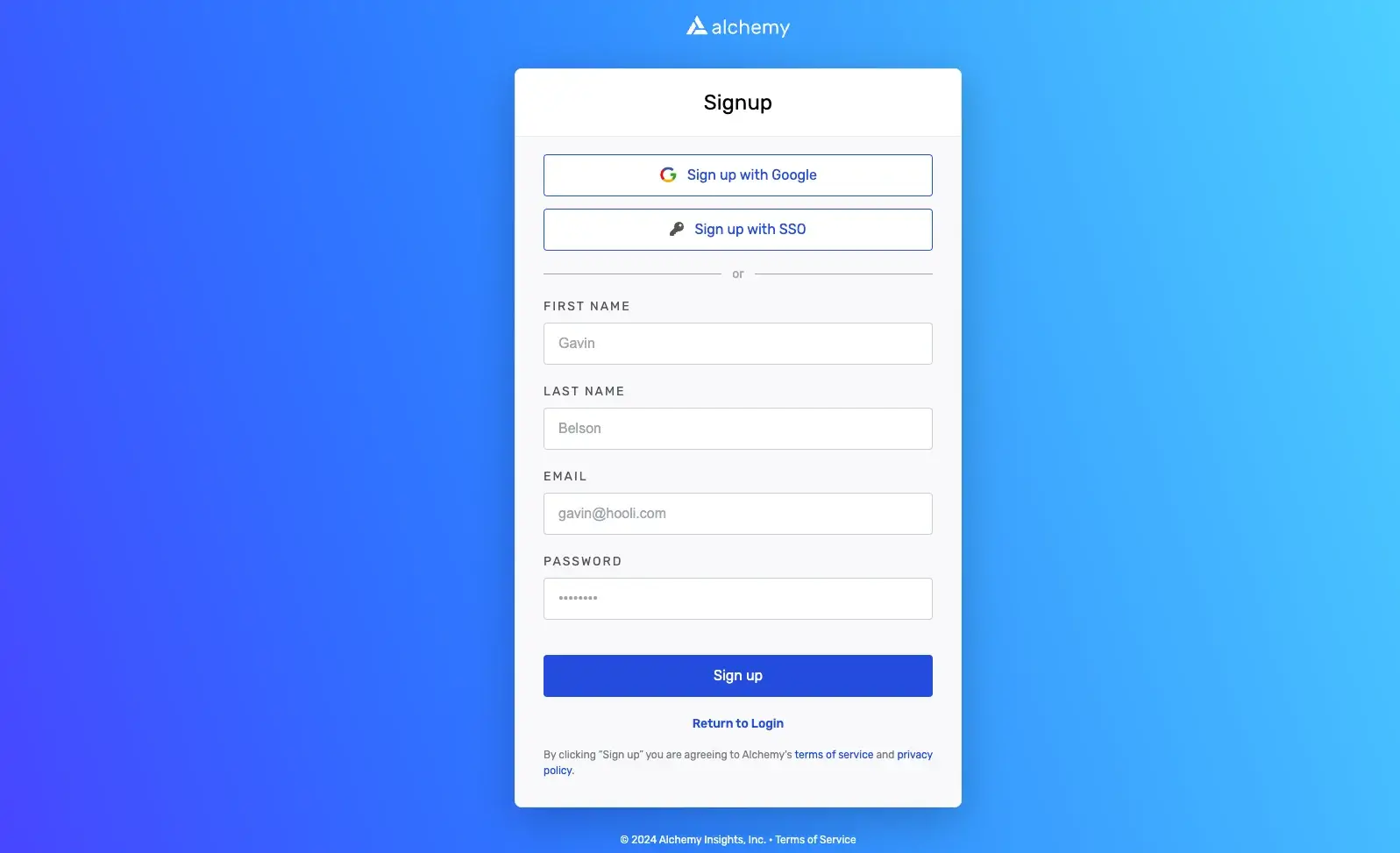
Visit the Alchemy website and sign up for a free account. This will give you access to various blockchain development tools, including the Sepolia faucet.
Step 2. Access the Sepolia Faucet on Alchemy
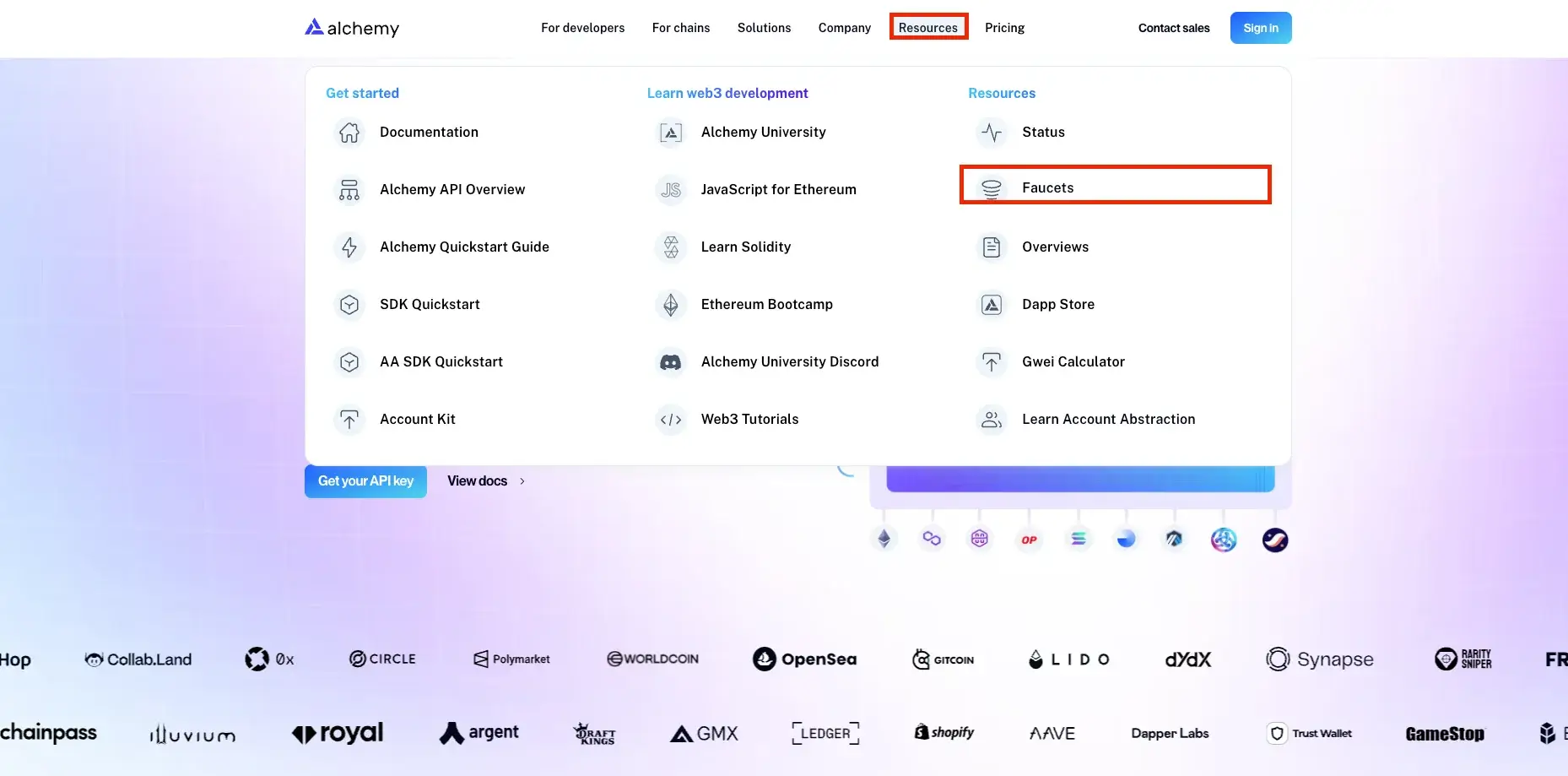
Once logged in, navigate to the Alchemy Sepolia Faucet page. You might find it under the “Resources” section. This is where you’ll start the process of claiming Sepolia ETH.
Step 3. Get Your Sepolia ETH for Free on Alchemy
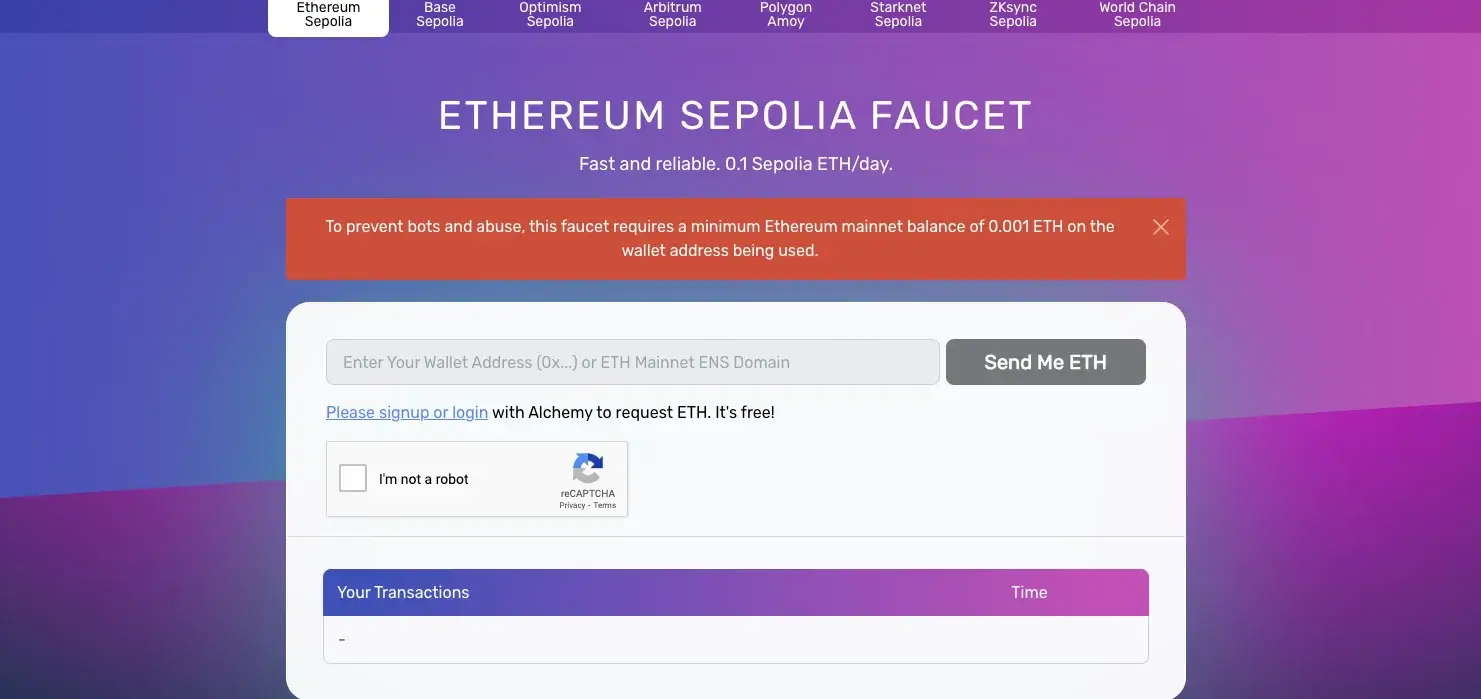
On the faucet page, provide the Ethereum address of your wallet where you want to receive the Sepolia ETH. Make sure it’s a wallet compatible with the Sepolia Testnet.
After that, click the “Send me ETH” or similar button to initiate the claim. This will trigger Alchemy to process your request and send the requested amount of Sepolia ETH to your specified wallet address. You should see the transaction appear in your wallet’s history shortly after.
How to Add Sepolia ETH to MetaMask: Step-by-Step Guide
Nowadays, Sepolia is automatically included in your MetaMask wallet. To start using it, simply switch your network from the Ethereum mainnet to Sepolia. It’s a quick and easy process!
Step 1. Open MetaMask and Access the Network Menu

Launch your MetaMask extension or mobile app to get started.
After, click on the drop-down menu at the top of MetaMask where it shows “Ethereum Mainnet.”
Step 2. Enable Test Networks
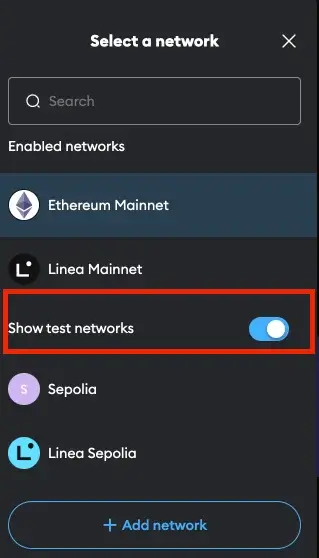
In the network menu, toggle the “Show Test Networks” option.
If you can’t see the option right there, click on the profile icon, navigate to “Settings” > “Advanced,” and toggle the “Show Test Networks” option.
Step 3. Select Sepolia
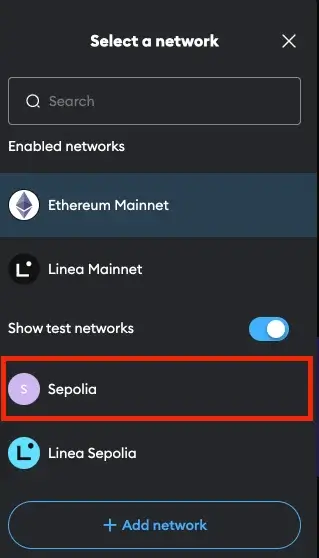
Go back to the network drop-down menu and choose “Sepolia test network” from the list of available networks, and that’s it.
FAQs
How to Get Free ETH Goerli?
Unfortunately, it’s no longer possible to get free Goerli ETH tokens. Major platforms like Alchemy, QuickNode, Infura, and Moralis have discontinued their Goerli faucets due to the deprecation of the Goerli network.
How Can I Buy Goerli ETH?
You cannot buy Goerli ETH. It’s a testnet token and has no real-world value. It was primarily used for testing and development purposes on the Goerli testnet, which is now deprecated.
How to Get Goerli ETH in MetaMask?
You cannot get Goerli ETH in MetaMask anymore. The Goerli test network has been deprecated, so MetaMask no longer supports it.
How to Get Testnet ETH?
To get testnet ETH for testing purposes, you can use the Sepolia testnet. You can obtain Sepolia ETH from faucets provided by platforms like Alchemy.
Has Alchemy Removed the Goerli ETH Faucet?
Yes, Alchemy has removed the Goerli ETH faucet due to the Ethereum Foundation’s official deprecation of the Goerli network. As an alternative, Alchemy offers the Sepolia ETH faucet.
Can I Still Get Goerli ETH Even though Sepolia Appeared?
No, you cannot obtain Goerli ETH anymore. The Goerli testnet was officially deprecated by the Ethereum Foundation in April 2024. This means that it is no longer supported or maintained, and its tokens are no longer available.
If you need a testnet for Ethereum development, Sepolia is the recommended alternative. It is a more recent testnet that offers similar functionality to Goerli but is actively supported and maintained by the Ethereum community.
What was the Prater Testnet?
Prater was a testnet launched by the Ethereum Foundation in March 2021 as one of the earliest Proof-of-Stake (PoS) beacon chains. It played a pivotal role in testing and refining the PoS consensus mechanism before its implementation on the Ethereum mainnet.
One of the most distinctive features of Prater proof-of-stake beacon chains was its completely open-source nature. As the first proof-of-stake beacon chain deployed on the Ethereum network, Prater served as a valuable testing ground for various PoS-related functionalities, including staking and validator operations. This provided developers with a platform to experiment with these crucial components of the PoS consensus mechanism and conduct transactions in a test environment.
While Prater has since been superseded by other testnets like Sepolia and Holesky, its legacy as a pioneer in PoS testing and “Prater proof” remains significant.
Conclusion
As the Ethereum ecosystem continues to evolve, the deprecation of the Goerli Testnet has marked a significant shift in how developers access testnet resources.
Moving forward, Sepolia stands as the primary testnet for Ethereum, offering a more relevant and efficient environment for testing and development.
This change highlights the ongoing efforts to streamline Ethereum’s testing infrastructure and support the community’s evolving needs.
